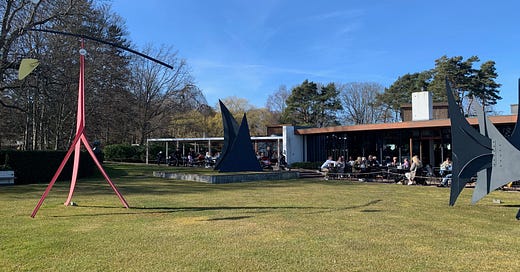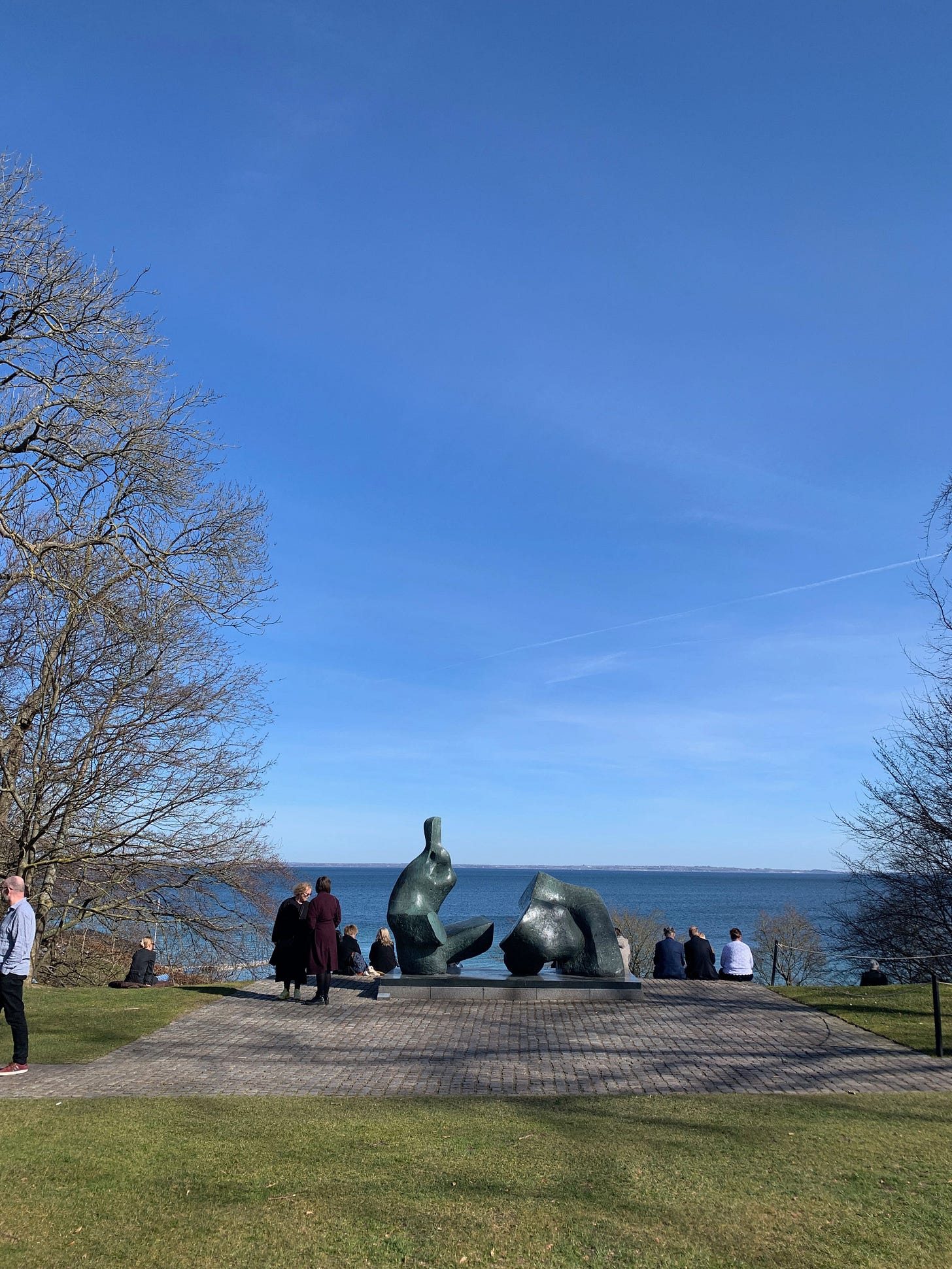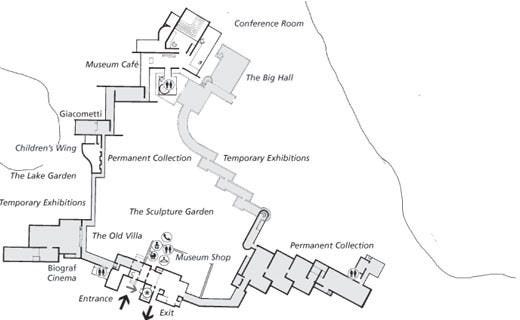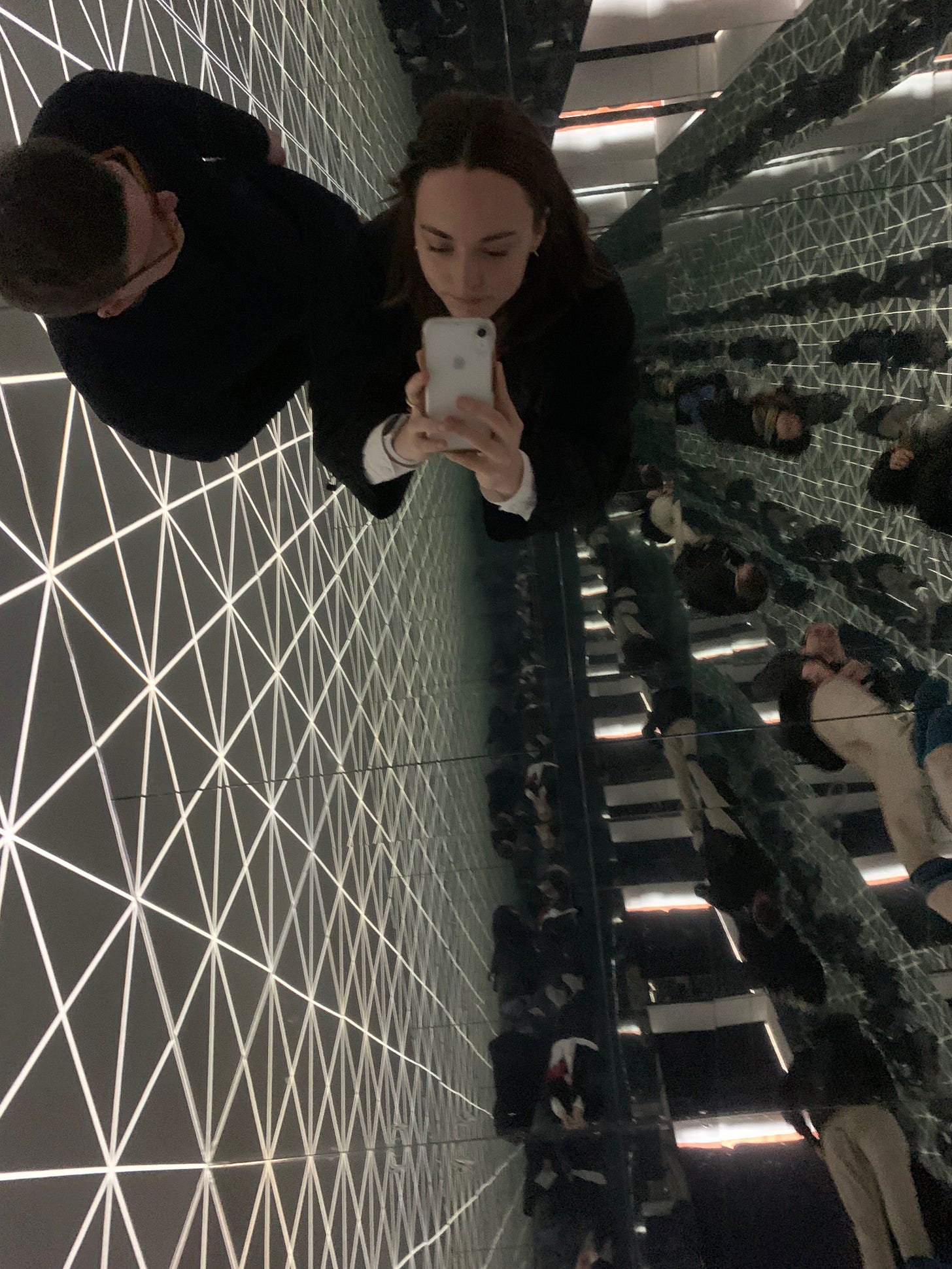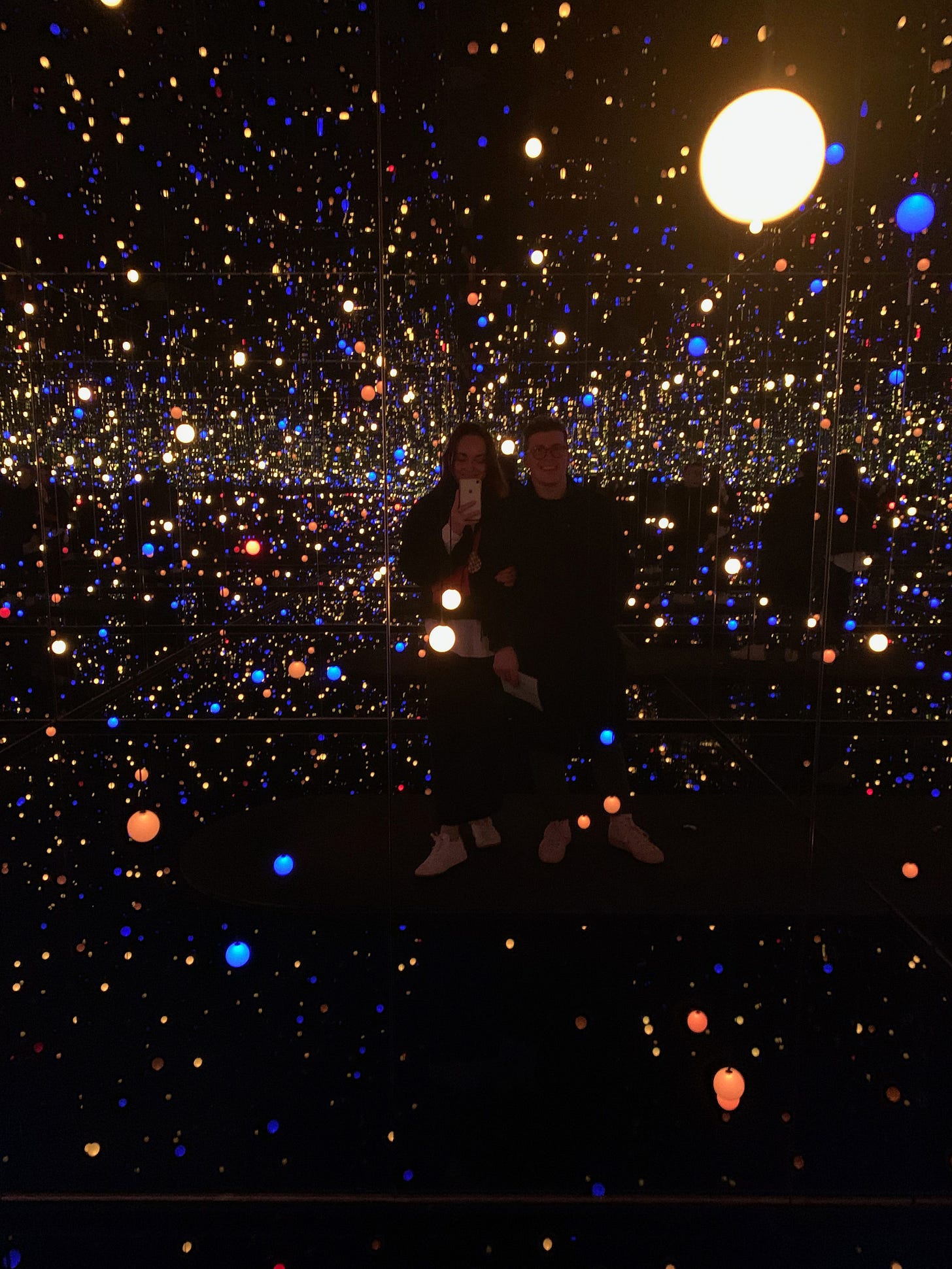Some museums are great and some make you feel a deep sense of fatigue when you walk inside them, and the difference is really just a vibe, you know? But I recently went to the best museum I have ever been to, and I want to do my best to articulate why it was so good. I realised after I had been wandering around for over an hour that I did NOT have museum legs - the well-known condition in which your legs and lower back ache from standing listlessly and gazing at art, and you feel desperate for a chair or bench but the museum has failed to provide one anywhere, and you look sadly at the nice little stools the security guards sit on and wonder if you can ask them to rest there for a moment, and then you start feeling very thirsty and like you need a snack but you’re not sure if it is possible to exit the gallery and reenter it or if you have to keep going through the maze until you come to the end. Not having museum legs is a sure sign that the experience of being in the museum has not been listless - it has been active, varied in pace, and has featured several places to sit.
What was this museum, you ask?? It was the Louisiana Museum of Modern Art, located in Humlebaek, Denmark, about thirty minutes up the coast via train from Copenhagen (en route to Hamlet’s castle, incidentally). Here are the reasons this museum was so great, and, I think, the general keys to an excellent museum.
Flow
Ok, so you might say that this is a weird one to put first, but I honestly think flow is the most important to a successful art-viewing experience. We all know the feeling of entering a space full of art and having no idea what to look at first, or being in an old-fashioned museum that is made up of a series of small box-shaped galleries that you walk through like a maze without understanding where you are going. The confusion and frustration that these kinds of spaces evoke for me seriously take away from my ability to look at and enjoy the things I’m there to see.
The problem of museum flow is two-fold - it is both an architectural issue and a curatorial choice. The Louisiana does both of these extremely well. First, it’s a spectacular building - mid-century modern, lots of gorgeous windows, lovely views, etc. Nice. But importantly for us, it was built with the museum-goer in mind (isn’t it weird that lots of museums don’t feel like this?). The building forms a loop that it is impossible to deviate from without turning around entirely, so there is only one route to follow through the galleries. They are differently shaped and at different levels - up and down stairs, flooded with daylight or subterranean - but they connect with one another so seamlessly that I felt as though I was just following a straight and obvious path. I did not look at the map of the galleries once, except at the end when I realised we had gone in a full circle. How peaceful! None of this “Ok, we’re in gallery 52 and we want to see the Impressionists and they’re in gallery 78, I think we need to go this way, oh wait, no…”
In the galleries in which the flow was marginally less obvious - such as those which were particularly large - curatorial choice comes into play. There was a temporary Diane Arbus exhibition at the Louisiana when we visited (terrific show), and it was hung chronologically in a long gallery. This is a tough space to curate - is the viewer supposed to walk all the way down one wall and then back up the other, only to turn around and go back down to exit the gallery? Or should the viewer walk down the center slowly, turning their head back and forth to look at each wall in turn, as they go? Neither of these is ideal, and both generally result in the viewer missing half of the show because they get tired or confused. So for this show, the curators designed a pleasant criss-crossing path between sections labelled by year that required only low-level engagement from the viewer to follow. I’m sorry for this horrible diagram, but I genuinely noticed this while moving through the gallery and I thought it worked so well and was so obviously thought-through.
Also, there were various types of seating all over the place! Couches with views, a whole room full of aesthetically pleasing benches, etc. THANK YOU.
Text
There is a trend amongst curators of Modern and Contemporary art to keep text explaining the art to a bare minimum, or to remove it altogether. I think this is absurd. Modern and Contemporary art is often very abstract, opaque, or bizarre, first of all, and needs more explanation that something that is clearly legible as a portrait of a king. But second of all, everything is made more interesting by some explanation. I want to know who the artist was, when they made this thing, what they said about it, and, yes, what the curator thinks of it! I’m delighted to hear the voice of the writer come through on wall texts - it doesn’t mean I have to agree with what they write, but it’s so much more interesting that something that reads like a textbook.
The Louisiana’s wall texts were fun, interesting, and neither too long nor too short. They explained the context of the piece and they always included a lot of adjectives - these are very helpful to have if you are fumbling for your own words to use to describe something. A good wall text can be like the beginning of a conversation about a piece - like a knowledgeable friend’s opinion, from which you can then form your own. I learned things but I didn’t feel bogged down by a full wall of text around every corner.
Permanent collection
This should go without saying, but a good museum needs to have a good permanent collection. You cannot get by on trendy visiting exhibitions alone. Some museums which have perfectly good permanent collections do this, anyway - they spend all their resources on blockbuster travelling exhibitions which may be great, but are transitory and rarely connect well to the museum’s ethos. A great example of a museum that does this is the Victoria & Albert Museum. Sometimes they have great shows (Frida Kahlo, Dior) but mostly they are random (Video Games, Food (?)) and they are rarely in conversation with the museum’s vast collection of decorative art, which is left to gather dust (also because they fired all their curators and conservators, don’t get me started).
The Louisiana’s permanent collection is superb, and demonstrates an active involvement with the ongoing developments of contemporary art as well as excellent taste. Many museums that collect 20th and 21st century art are heavily swayed by trends and end up buying art that is very fashionable but turns out to be pretty dull and unappealing ten years after it is purchased. I empathize with these museums, because it is a true skill to have taste that surpasses trends. But the Louisiana does it! And, importantly, their temporary exhibitions were obviously in conversation with their collection. The two on show when we visited were a Diane Arbus retrospective, in which the introductory text explained the way American photography had been central to the Louisana’s exhibition programme for decades, and a Sonia Delaunay retrospective, which nicely incorporates a woman multimedia artist into the museum’s display of early twentieth-century painting and sculpture.
Services
Don’t hate me, but a good museum has good food, a nice gift shop, and nice people working there. It is also easy to get to - it has a nice, free parking lot or is well-served by public transportation. Museums that are good take several hours to properly move through, and you will need refreshments afterward. Even if you don’t feel like a sit-down lunch, it’s nice to know you can get a pleasant cup of coffee and sit somewhere nice to drink it and think about the art you’ve just looked at. A good museum gift shop is a delight - it can be a reminder that you can live surrounded by nice things all the time, not just when you visit a museum. Yes, they are always overpriced and apparently tote bags are bad for the environment, but I love to be able to buy a postcard of literally every single object in the museum. Nice staff goes without saying - everywhere is made better by nice people, and people are generally made nicer by good pay and working conditions, so it hopefully follows that nice people reflect a nice place to work.
That’s my summary of the ingredients of a good museum, and I stand by them. The Louisiana was exceptional, and many of the things that made it so good cannot be universal (beautiful setting by the coast, balance of inside and outside space, the perfect weather on the day I visited). But a lot of its basic qualities can be, and should be, more common. I LOVE museums, so I’m willing to give them the benefit of the doubt more than your average person, but I am so often disappointed by their lack of imagination and genuine interest in engaging visitors.
Some Other Things I’m Thinking About:
The Worst Person in the World, a Norwegian movie I expected to love and did. Everything I read about it described it as a romantic comedy, which does it a disservice - it’s quiet and beautiful and about life itself.
Shiva Baby, an American movie I also expected to love, and did.
Elamin Abdelmahmoud’s beautiful essay helped me feel less crazy for feeling like everything is crumbling and there is nothing to look forward to.
I really like this movie review podcast from the Atlantic
Liberty Puzzles, the best jigsaw puzzles money can buy

